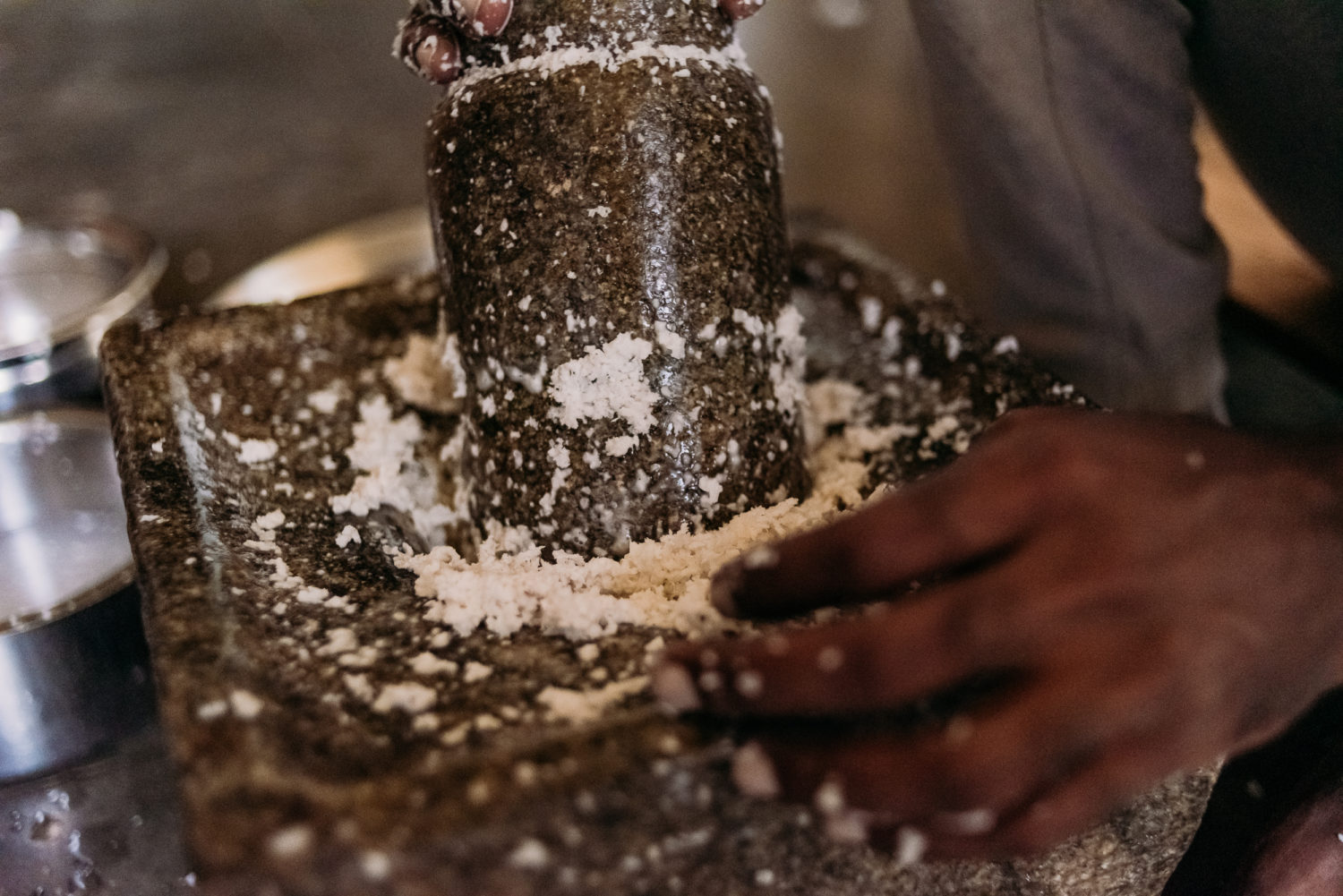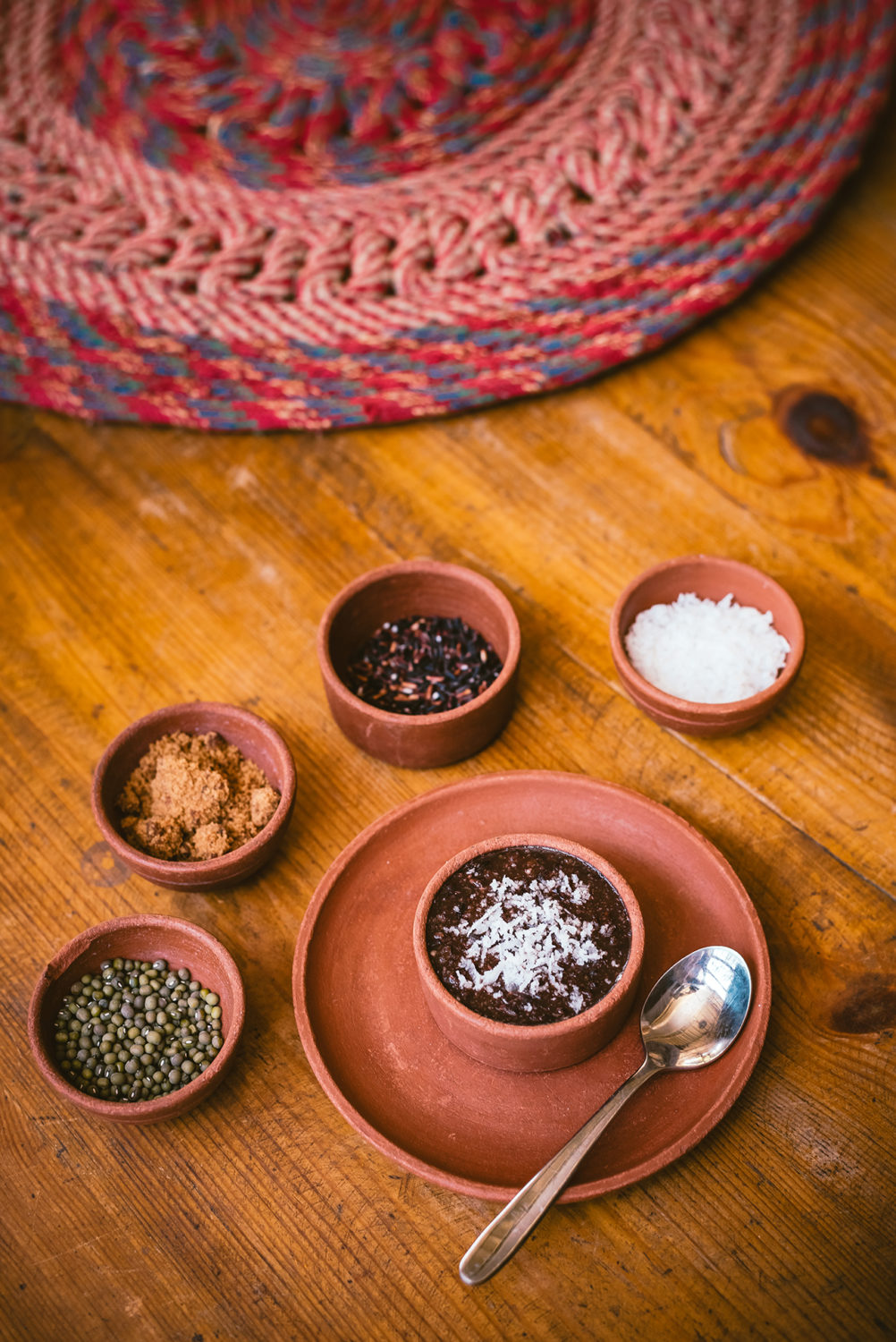South Indian Chef Vijhay Murugavel’s Ayurveda-Influenced Sweet Rice Recipe
By Something CuratedBehind restaurant concept Maiyam Past Food in Auroville, Tamil Nadu, India, presently shuttered due to the crushing impacts of the pandemic, chef Vijhay Murugavel explores time honoured insights and techniques in cooking while celebrating the constantly evolving nature of tradition. Carefully observing the characteristics of food and how our bodies respond to it, Murugavel looks to Ayurvedic medicine, traditional healers and food anthropologists to create his delicious and compelling menus. To learn more about his holistic approach to eating and one of his favourite dishes to make at home, Something Curated caught up with the chef. The below are Murugavel’s words.

Before I became a chef, I was a palm oil and vanaspati industrialist; being in that field taught me about the commercial food chain and its ecological, social, and political impacts. Slowly and firmly I gravitated towards alternate food practices that were prevalent before India’s industrialisation. During my industrial days, I used to eat purely for taste and excitement from established restaurants and cheap junk foods spots almost everyday. I did not savour home food much but when I did, I demanded sugary sweets, packaged meats, eggs, and processed and refined foods from the supermarket. I grew unhappy in life in my early twenties due to stress from my then profession. Without my knowledge, I had been choosing food as an escape route. Then came a time when I grew extremely uncomfortable with my body and nobody could tell what was wrong with me including the doctors – I was forced to figure it out myself.
My primary objective was to become comfortable with my body so that I could be more productive. I began meditation to help build that relationship with myself. I ate only vegetarian home-cooked meals without a conscious effort. Then one day, I was offered chicken nuggets, and when I ate a few pieces, the discomfort came rushing back. This is a moment I vividly remember in my life; I felt invigorated to know that food is an intrinsic part of our wellbeing. There started my journey to find my personal needs and wants with food. It has been 7 years now, my journey took me to shops and restaurants that promote alternate food practices, and I have travelled to the villages of southern India and learned from Ayurvedic cooks, food anthropologists, and local healers. I have compiled their understanding along with inputs from several food workshops I attended and created my expressions based on my journey.
After much experimentation and consideration, I have settled for the idea of less is more. I focus on sourcing good quality heirloom ingredients and cook them minimally by mostly choosing not to add anything to them. An ingredient’s character is either retained, amplified, modified, or destroyed depending on if combined with the right combinations, cooked correctly or overcooked, respectively. A good meal for me is a celebration of the diversity around us through the support of artisanal farmers, a source of nourishment through local knowledge systems, and doing justice to a recipe that has survived various evolutions. I do experiment and develop new recipes but they are restricted to the values derived from traditions without borders. Below is a simple recipe for Sweet Rice from Maiyam Past Food.

Recipe for Maiyam Past Food’s Sweet Rice
Ingredients:
Black rice, 300 grams. Wash the rice a couple of times and soak overnight. Black rice can be replaced with any starchy whole (red or brown) raw rice or aromatic white rice
100 grams of moong dal
Scraped coconut, the same volume of the rice or half the volume of chopped coconut
A generous amount of coconut oil or ghee
Cane jaggery or any dark sweetener as per taste
1 piece of cardamom
Pinch of dry ginger
Camphor for garnish (optional)
Method:
Roast the lentils with a drop of oil or ghee until it releases a nutty flavour; add 3-4 times more volume of water than the lentils and allow it to boil.
Add the soaked rice after the lentils start to break and add 3-4 times more volume of rice.
Add jaggery according to your sweetener threshold after the rice is cooked and continue boiling for 5 minutes.
Make a very fine coconut paste and add it into the pot and switch off the flame.
Add crushed cardamom and dry ginger at the end and mix well.
Garnish with ghee or coconut oil before serving.
Feature image courtesy Vijhay Murugavel